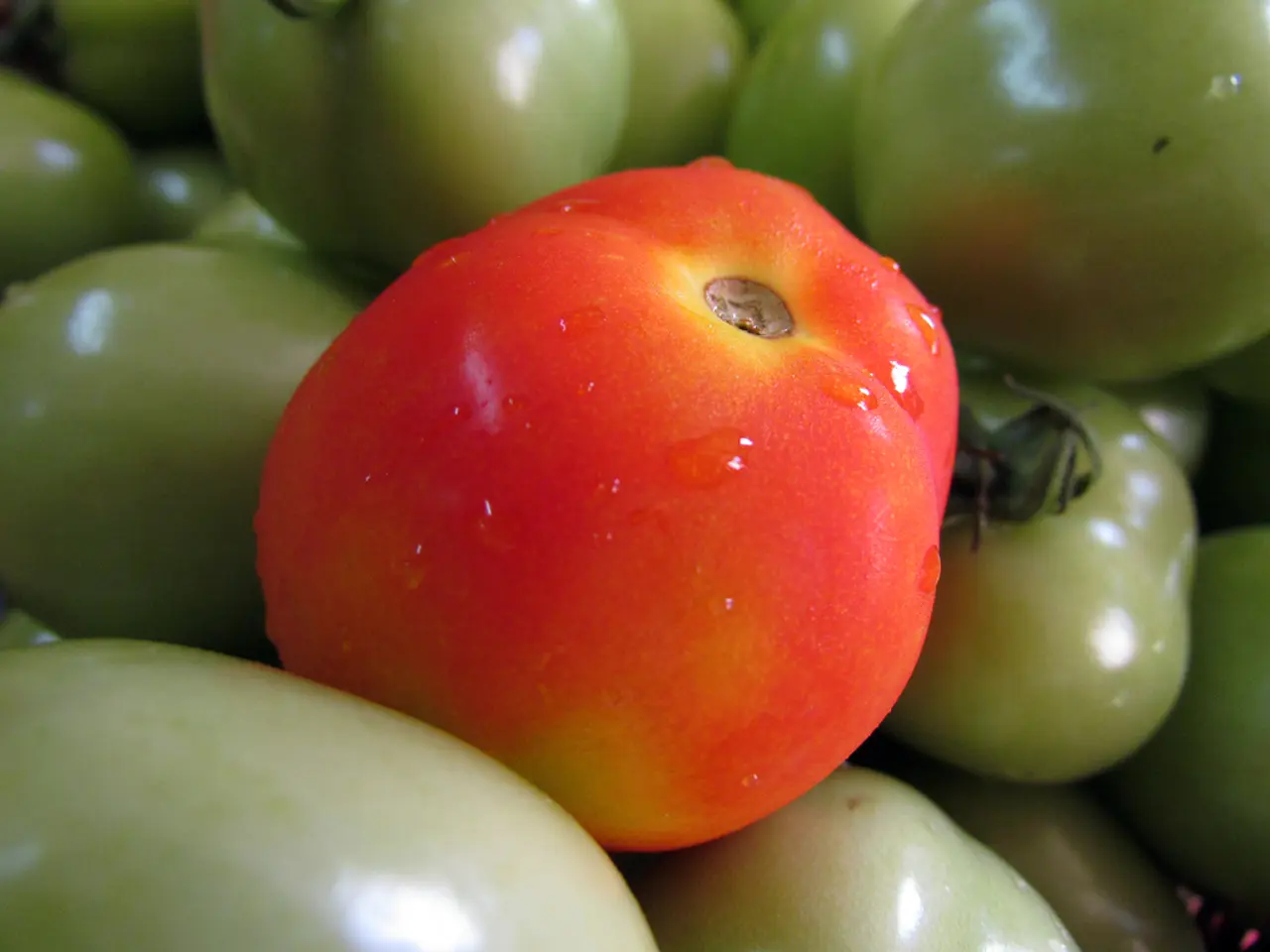Tomato Plant Failure to Produce Fruit: What Causes My Plant to Generate Flowers but Not Fruit?
Tomatoes, a staple in many gardens and kitchens, are day-neutral plants, meaning they flower and fruit continuously when temperatures are moderate. However, these plants have specific requirements to thrive and produce an abundance of fruit.
Firstly, tomato plants require warm temperatures. Ideally, they should experience 65 to 70 degrees Fahrenheit (18-21 degrees Celsius) during the day and at least 55 degrees Fahrenheit (13 degrees Celsius) at night to set fruit.
Watering is another crucial aspect. Tomatoes need around an inch to 1.5 inches (2.5 to 4 cm) of water per week. This need increases for plants grown in raised beds or containers. Insufficient water can lead to drought stress, causing abortive blossoming and no fruit.
To address tomato plants dropping flowers, it's recommended to practice regular and adequate watering (preferably in the morning to avoid evening moisture causing calcium deficiency), apply supplemental calcium spray on leaves, and avoid rapid growth from excessive nitrogen fertilization, as calcium deficiency commonly causes flower drop and blossom-end rot.
Temperature fluctuations, improper irrigation, insufficient fertilization, and poor pollination can also affect tomato plants. New blooms on tomato plants are only receptive to pollination during their first 50 hours. Encourage the presence of pollinators, such as bees, or hand pollinate by transferring pollen from the anther of a male bloom to the stigma of a female bloom. Without pollinators, you will have only a few tomatoes.
Tomatoes can be pollinated by bees, wind, or even your own movements in the garden. However, cold, windy, or wet weather can limit bee activity, which helps pollination and encourages fruits to set.
Space is also important. Tomato plants should be spaced between 24 and 36 inches (60-90 cm) apart to avoid limiting fruit set and susceptibility to diseases.
When it comes to choosing the right variety, heirloom tomato varieties are more prone to blossom drop than modern cultivars. If heat is an issue in your area, consider planting heat-set, hot-set, or heat-tolerant varieties like Bella Rosa, Phoenix, Red Bounty, Tribune, or Early Girl.
Lastly, tomatoes need at least 8 hours of sun per day. In hot regions, they can be grown in dappled shade. By understanding and meeting these requirements, you'll be well on your way to a bountiful tomato harvest.
Read also:
- Water-Based Adhesives Industry Forecasted to Reach USD 51.6 Billion by 2034
- Community-Focused Aged Care in Wollongong: Prioritizing Community and Compassionate Care
- Enhancing anti-inflammatory responses and promoting oral hygiene by means of turmeric
- Jaguar Swimming Distance Breaks Species Record, Puzzles Researchers




